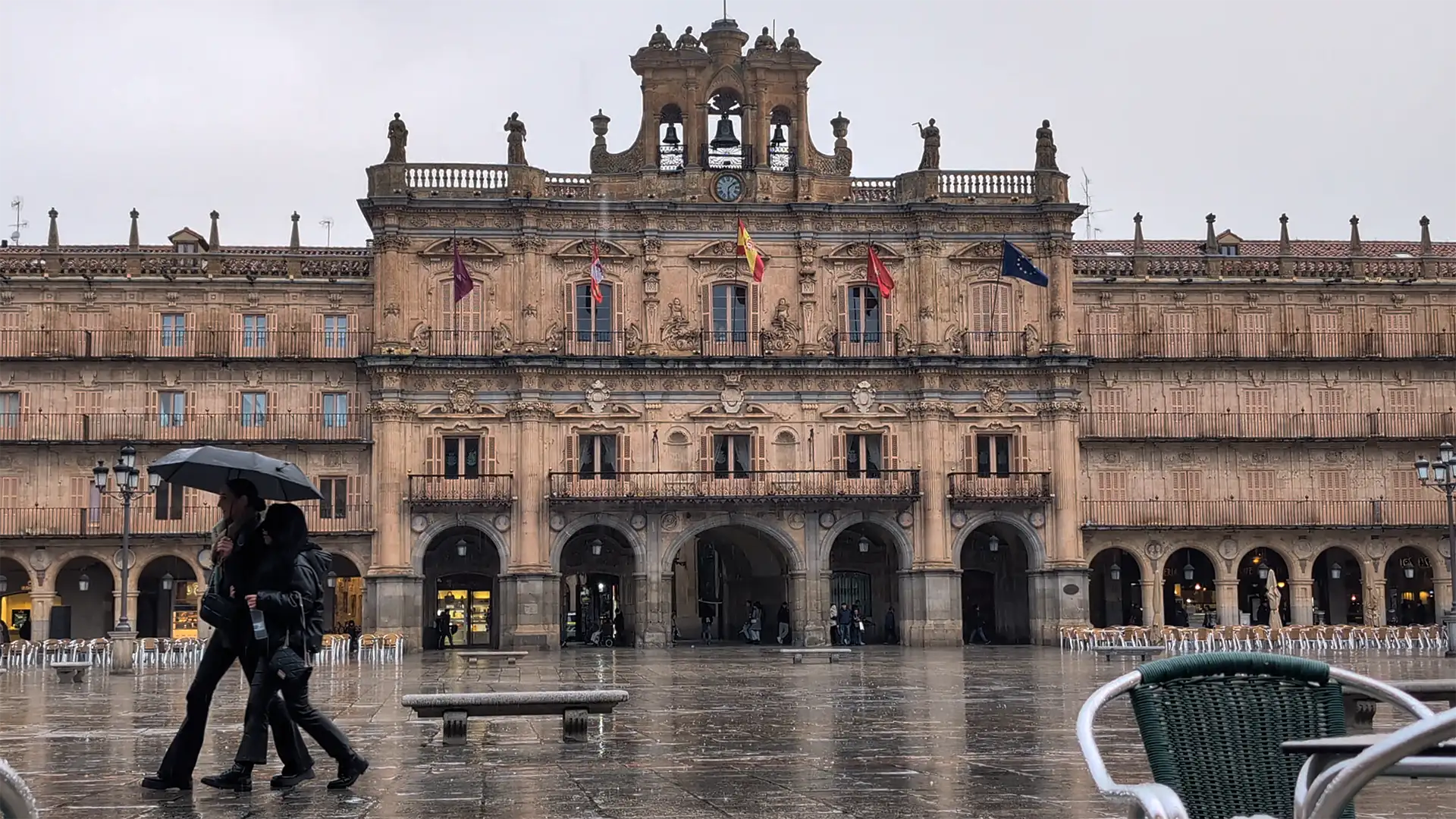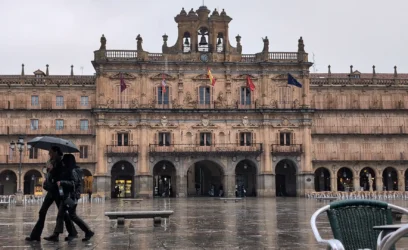Saying Salamanca is one of the most beautiful cities in Spain might sound like a cliché, but it only takes a few minutes walking through its old town to see why. The pale stone façades take on a golden glow in the sunlight, the architecture is impressive without being over the top, and everything feels well preserved without turning into a museum set.
A UNESCO World Heritage Site since 1988, Salamanca has one of the most enjoyable cities in Spain to explore on foot. And despite its long history, the city is far from stuck in the past. The university atmosphere keeps it lively, with students from around the world, buzzing cafés, busy bars and a constant energy in the streets.
In this guide, you’ll find the places that stood out the most during our visit — a great starting point for planning your trip and making the most of the city.
Plaza Mayor
The city’s main square
Plaza Mayor is the main meeting point in Salamanca. It is surrounded by arches and historic buildings, where you’ll find cafés, restaurants and the town hall, and it is considered one of the most beautiful plazas mayores in Spain. It was built in the 18th century in Baroque style and has an irregular shape, which means each side has a different length (it’s not a square). Above the arches, you can see medallions with the faces of historical figures.
Did you know?
- The square was once used as a market, bullring and stage for public events.
- It has 88 arches, each topped with a medallion showing kings, writers and other important figures.
- Cafetería Novelty, opened in 1905, is the oldest café in the square
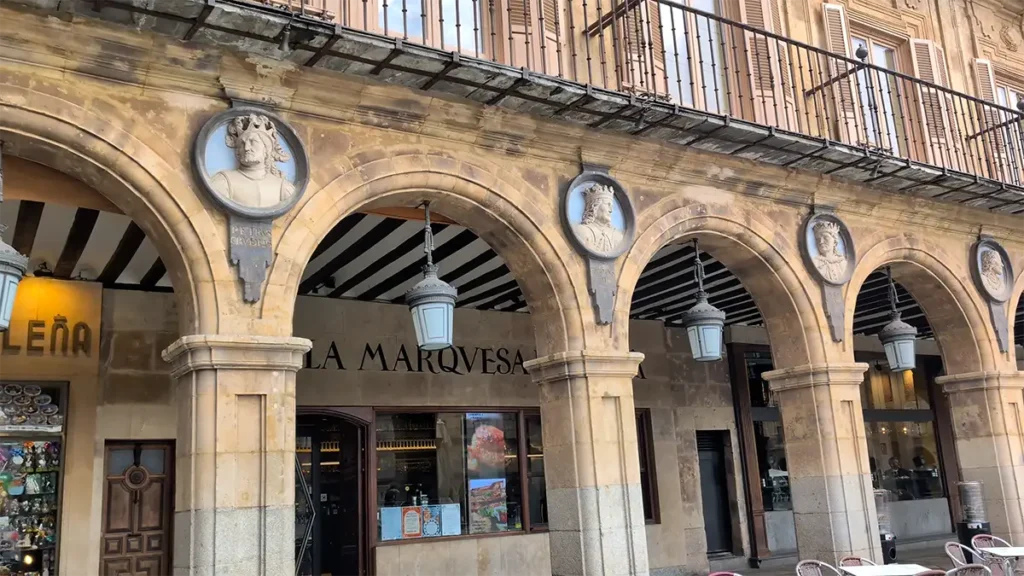



Casa de las Conchas
One of the most curious buildings in Salamanca
Casa de las Conchas stands out immediately thanks to its façade covered with over 300 stone shells. It’s worth stepping inside to see the inner courtyard, with decorated columns and a unique view of the Clerecía towers right next door. Today, the building houses the Salamanca Public Library.
- Admission is free.
- Opening hours: Monday to Friday from 9am to 9pm, and Saturdays from 9am to 2pm (closed on Sundays).
Did you know?
- No one knows for sure why the façade was decorated with shells. It may be linked to the Order of Santiago.
- A local legend says there’s a treasure hidden behind one of the shells. Some have even been broken in the search, but it’s never been found.
- From the upper floor, you get a close-up view of the Clerecía towers next door.

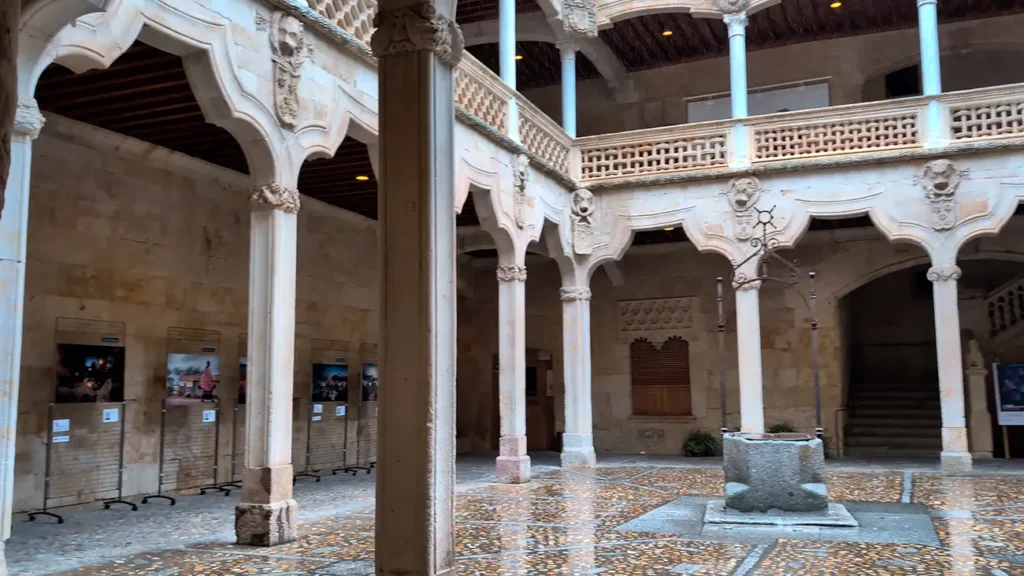
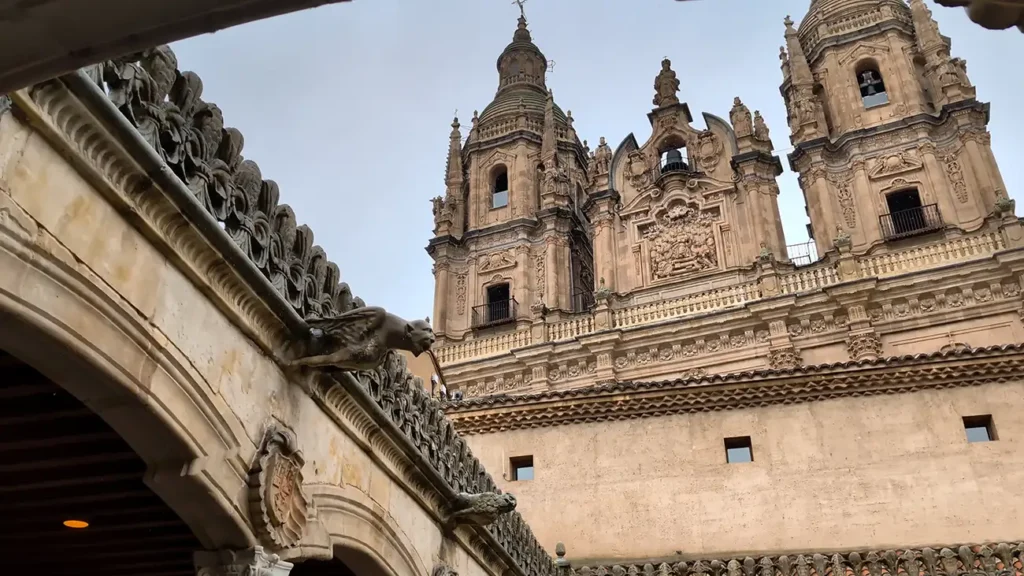
San Esteban Monastery
One of the most impressive places in Salamanca
This was one of the places we enjoyed the most in the city. The monastery is huge and impressive both from the outside, with its richly decorated façade, and from the inside, where you’ll find the church and a beautiful two-storey cloister.
In one of the interior rooms, open on Saturdays, it’s said that Christopher Columbus met with the Catholic Monarchs before setting sail for the Americas. The most curious detail is the floor: made with stones and cow hoof bones.
- Admission: €4,50
- Where: Plaza del Concilio de Trento s/n
- Opening hours: Monday to Sunday, 10:00–13:30 and 16:00–20:00 (closes at 18:00 in winter)
Did you know?
- Dominican friars still live in the building.
- The cloister is one of the most beautiful in the city.
- The room where Columbus is said to have met the monarchs is known as the Salón de Profundis.
- Upstairs, there’s an exhibition about the Dominicans’ work in the Americas. The order defended the idea that Indigenous peoples were children of God and had rights, a position that opposed the abuses of colonisation and led to their replacement by other orders.

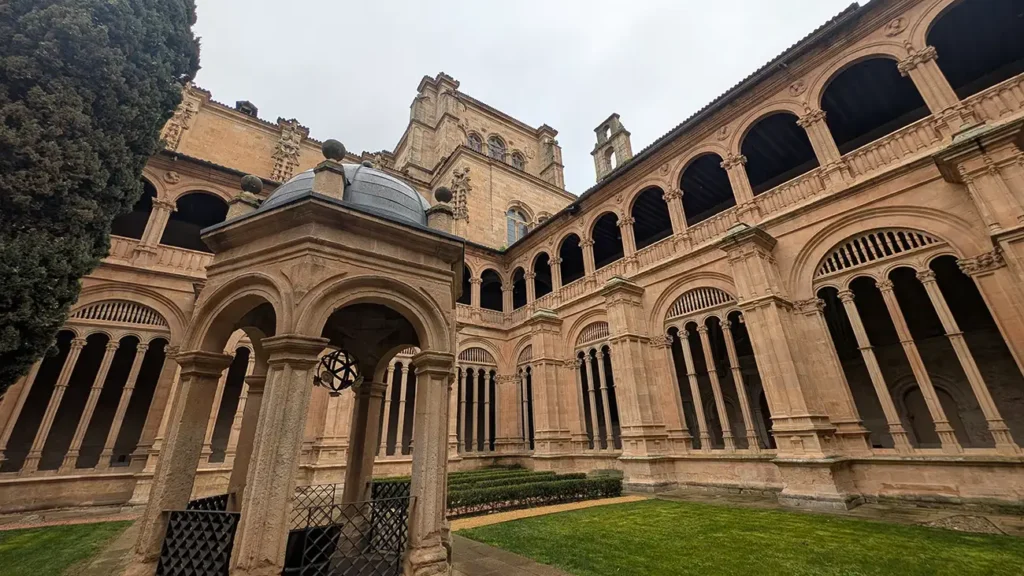

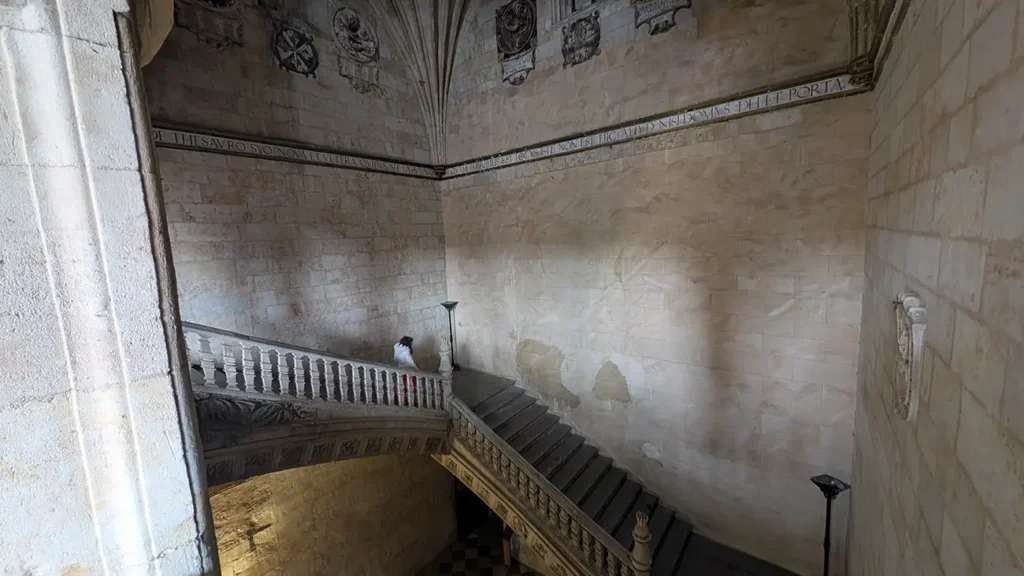
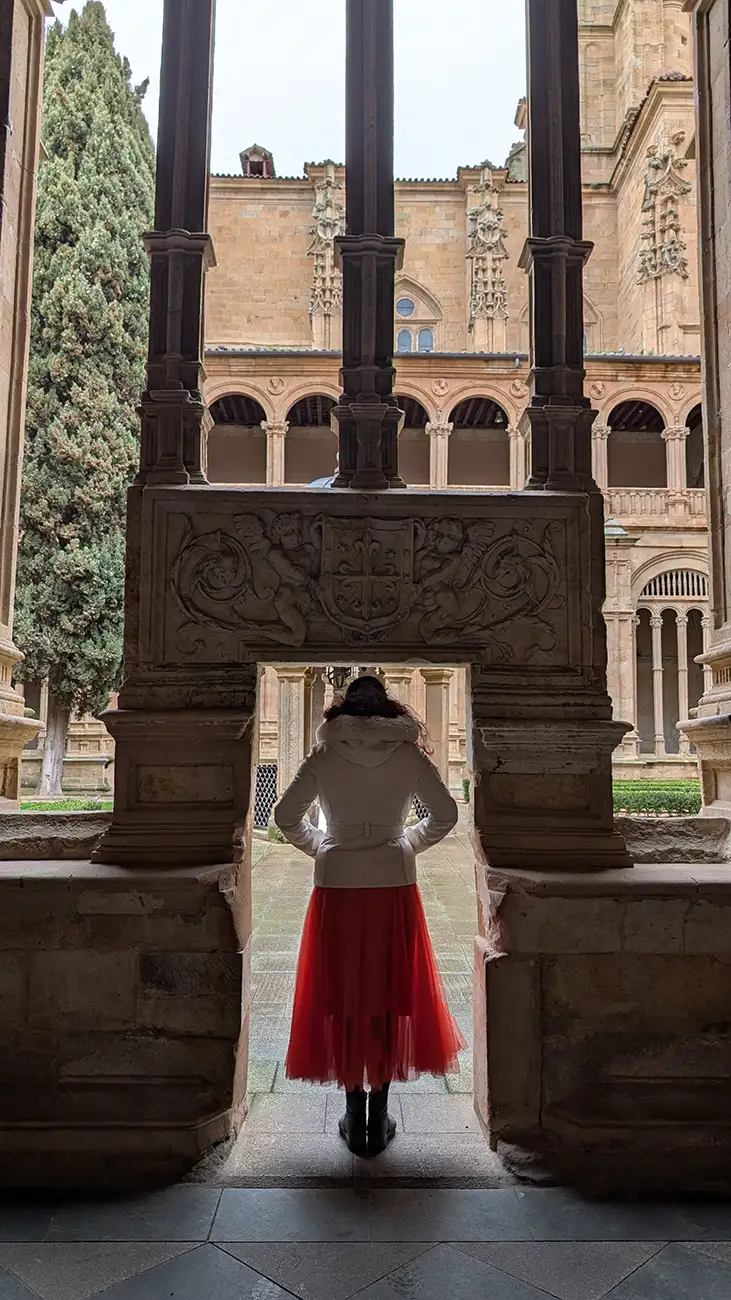
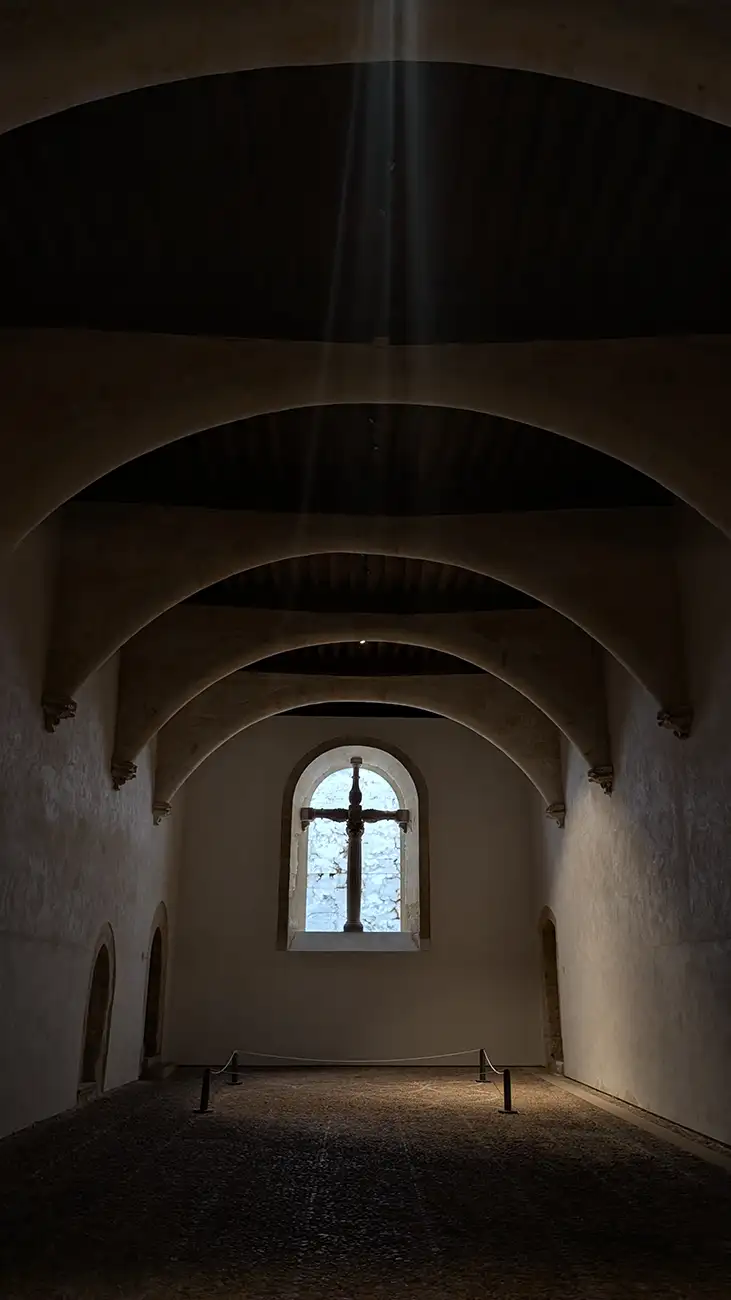


Salamanca Cathedrals
Two cathedrals in one visit!
Salamanca has two interlinked cathedrals: the New Cathedral (which isn’t exactly new, as it’s over 500 years old) and the Old Cathedral (which is nearly 900 years old).
The entrance is through the New Cathedral, a late Gothic building that is large and richly decorated. As you follow the visiting route, a discreet door leads into the Old Cathedral. Smaller and with softer lighting, it has a completely different atmosphere and contains one of the most beautiful altarpieces in the city.
An must-see visit in Salamanca. It’s fascinating to see the contrast between the two. Both are spectacular, but we were especially impressed by the Old Cathedral — its painted decoration and layout are quite different from what we’re used to.
- Admission: €10 (includes audioguide)
- Where: Plaza de Anaya
- Opening hours:
- Monday to Saturday: 10:00–20:00 (last entry at 19:15)
- Sunday: 10:00–18:00 (last entry at 17:15)
Did you know?
- The New Cathedral is the second largest in Spain.
- Hidden in the stonework of the New Cathedral’s façade are figures like an astronaut and a dragon eating ice cream, added during a 1992 restoration as a nod to modern times.
- The two cathedrals are connected internally and visited in sequence.
- The Old Cathedral’s altarpiece has 53 painted panels and covers the entire wall behind the altar. It’s one of the most impressive in Spain.
- The tower visit is called Ieronimus and requires a separate ticket.
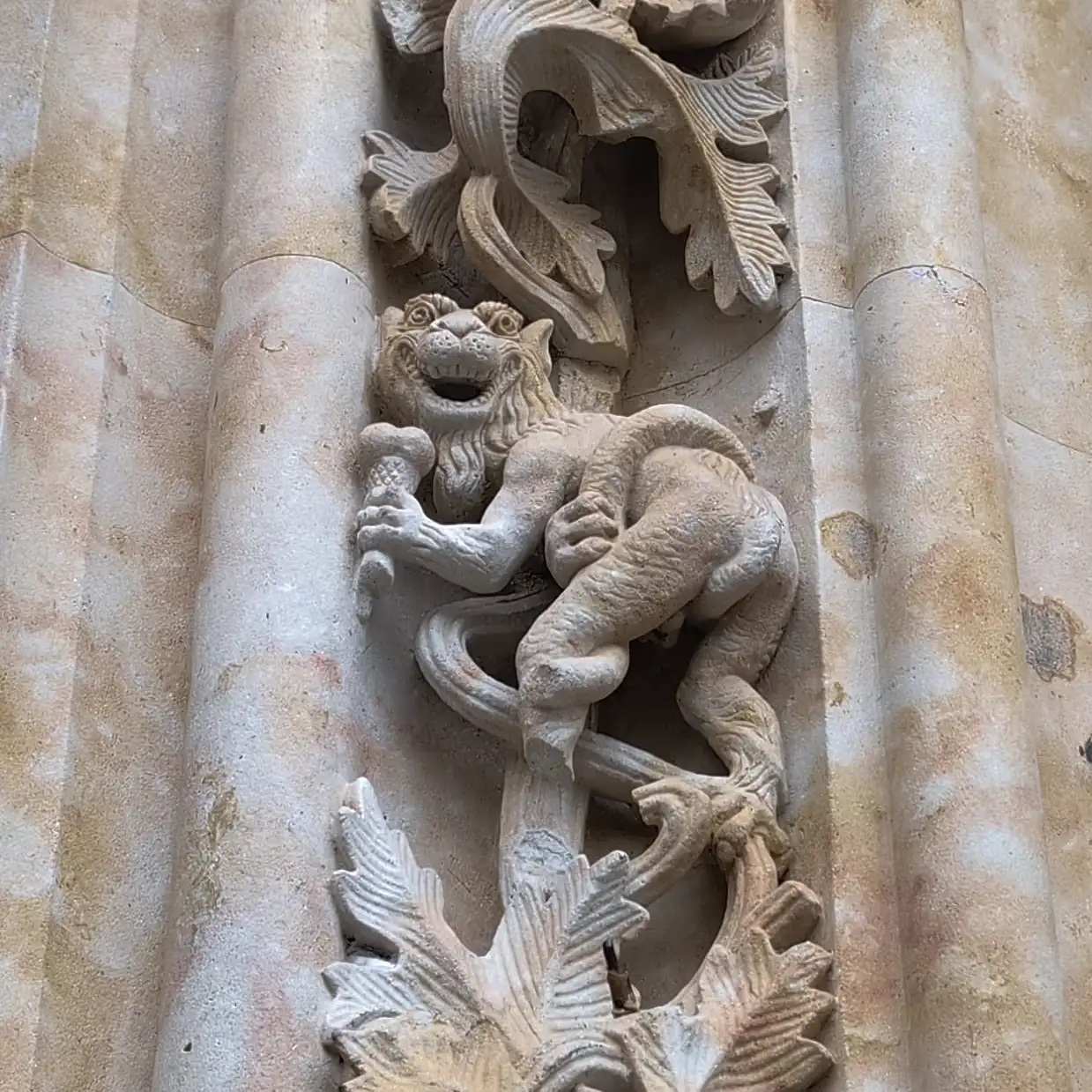
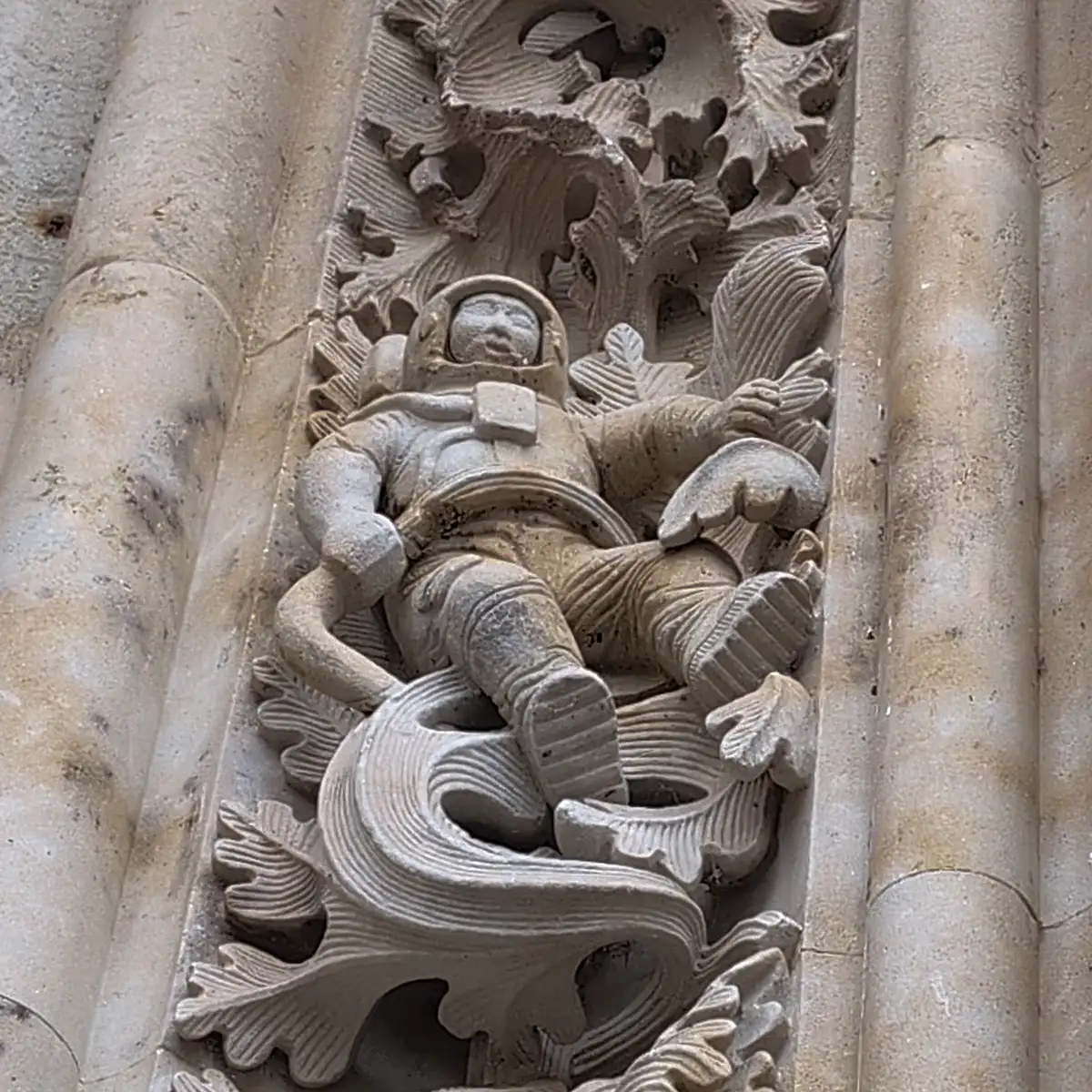
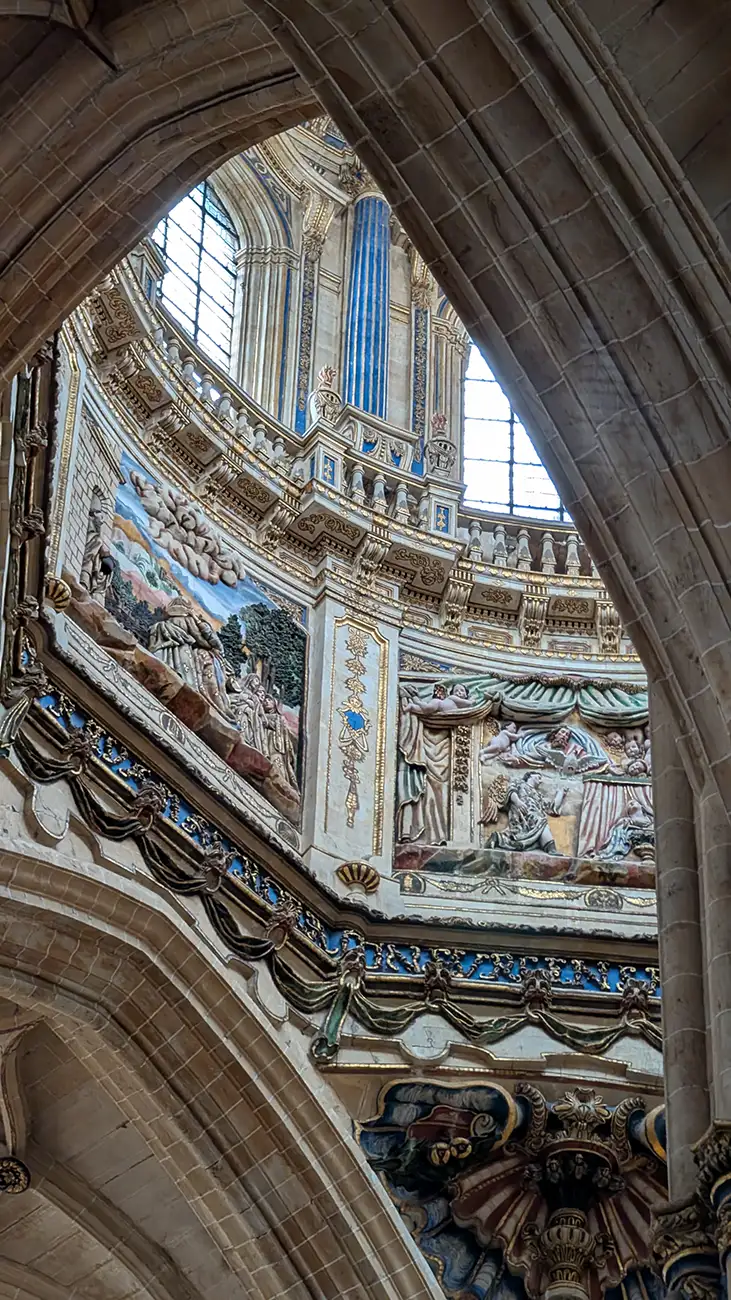
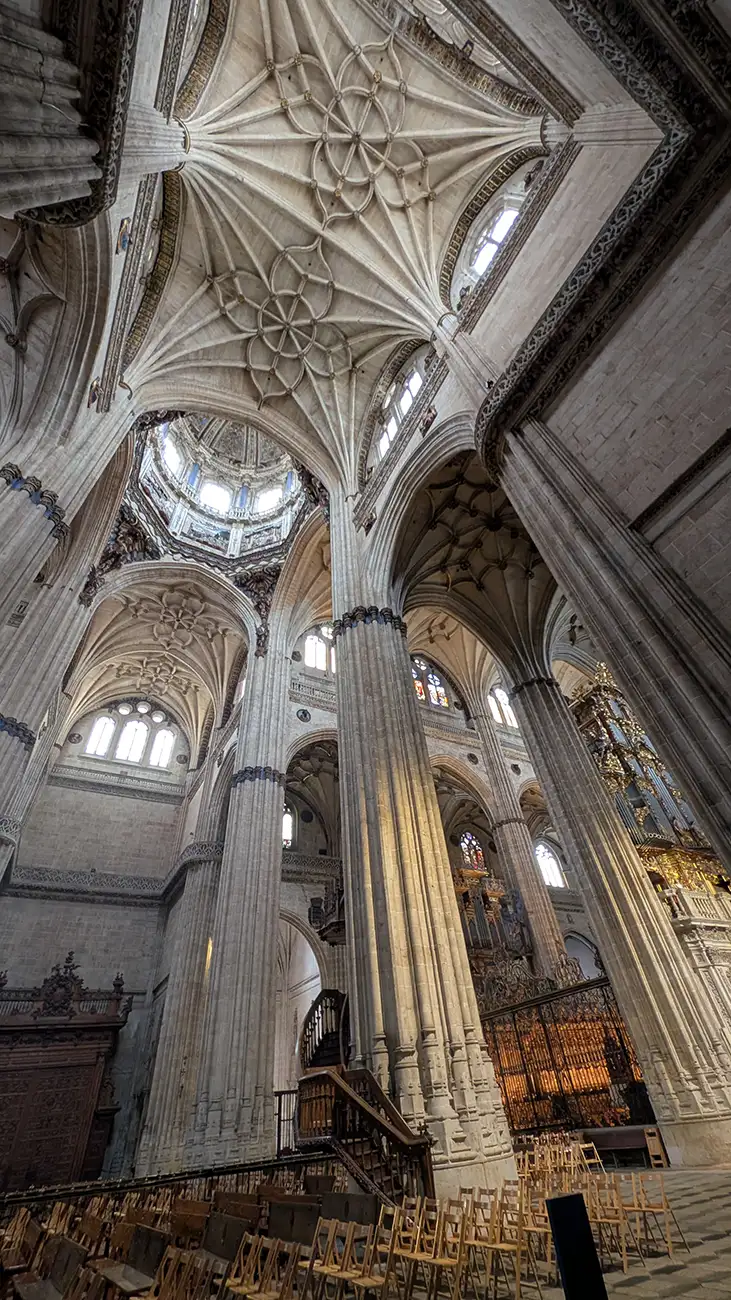
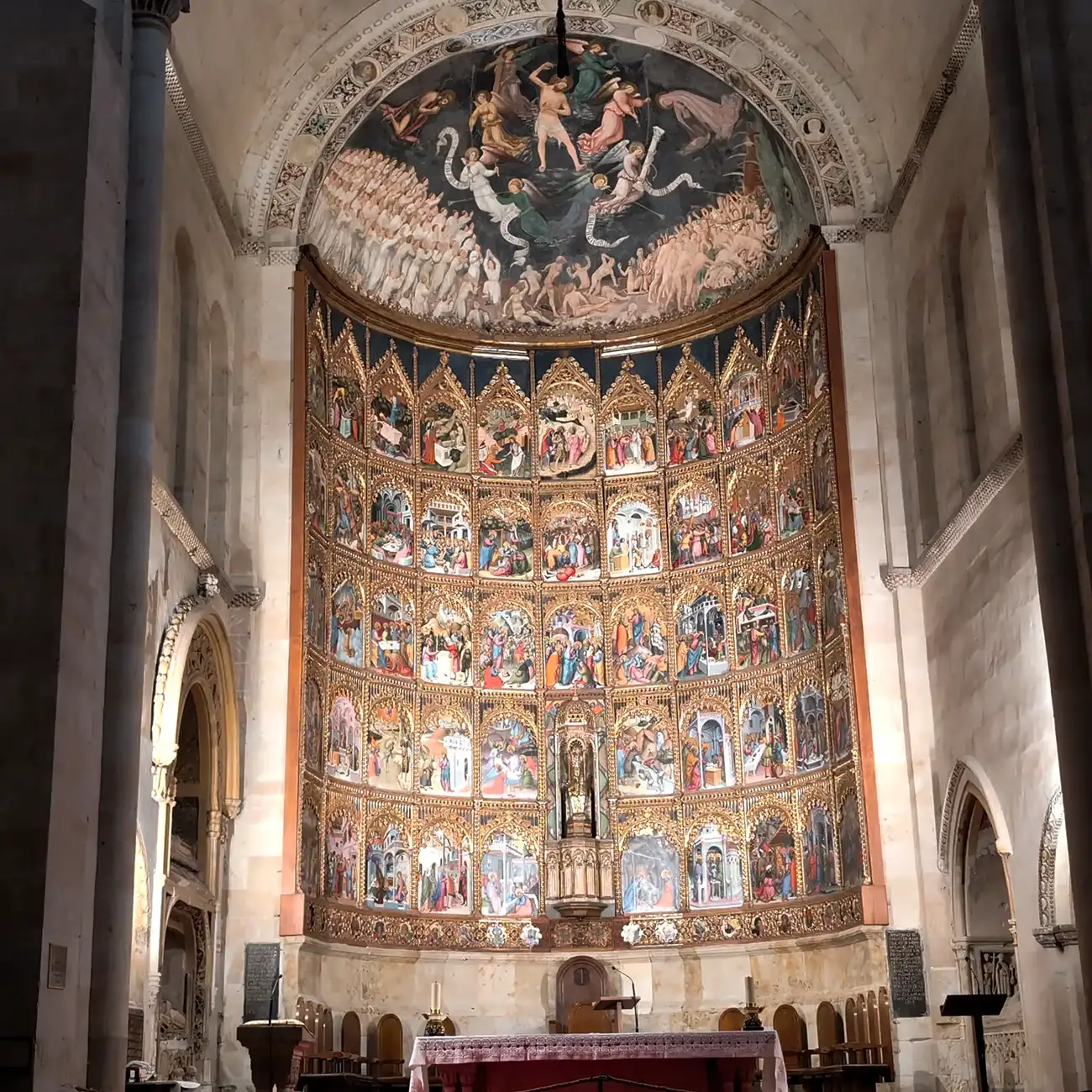
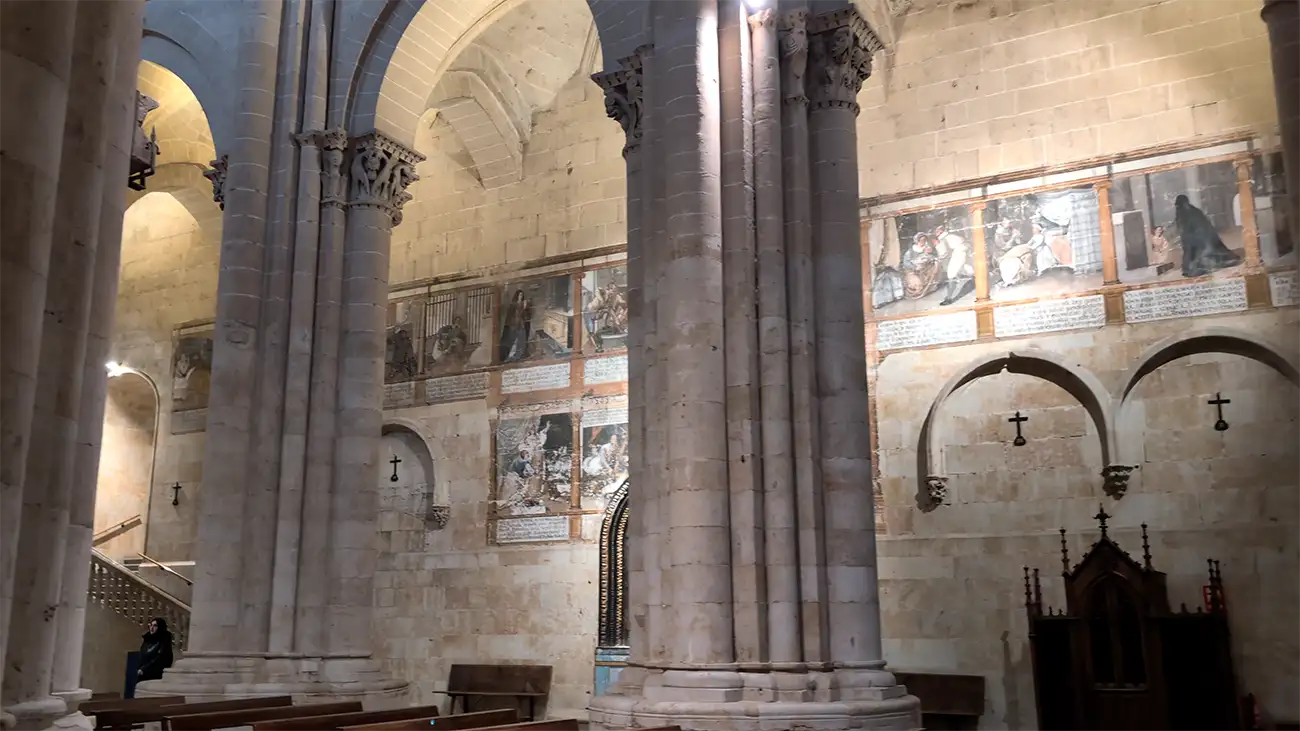
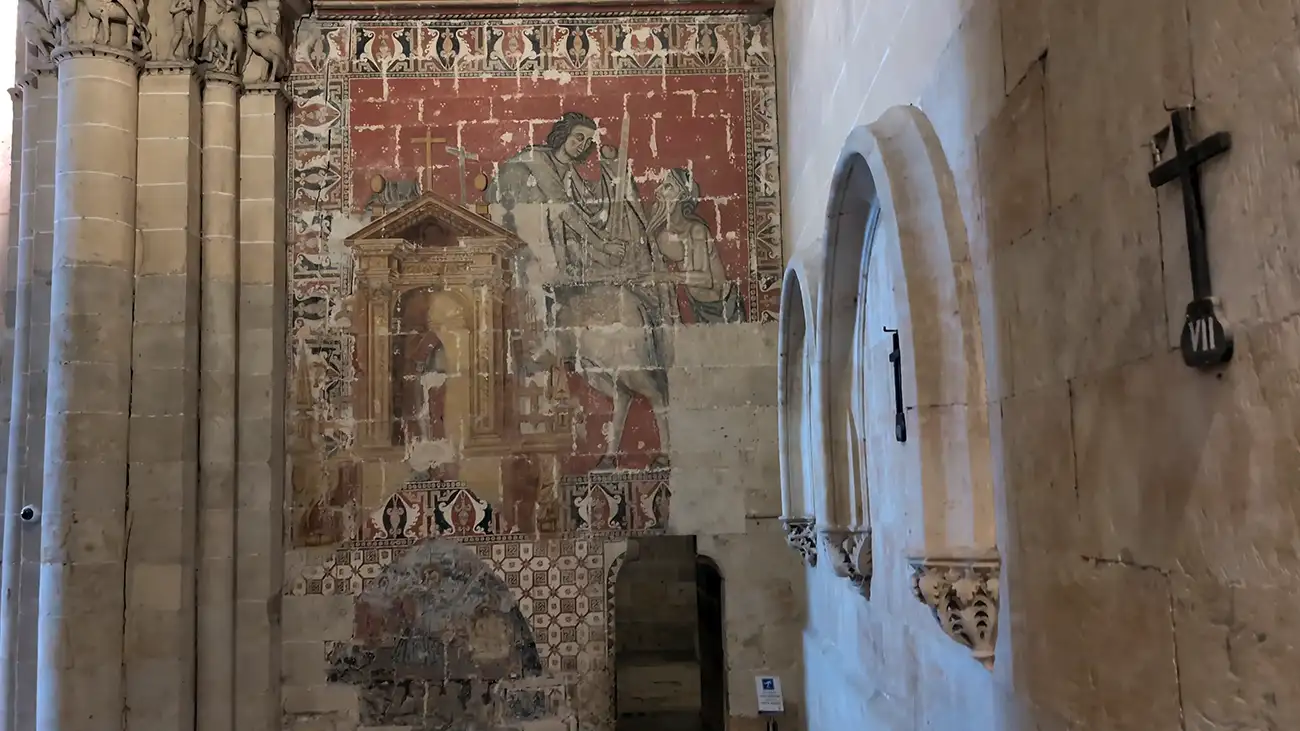
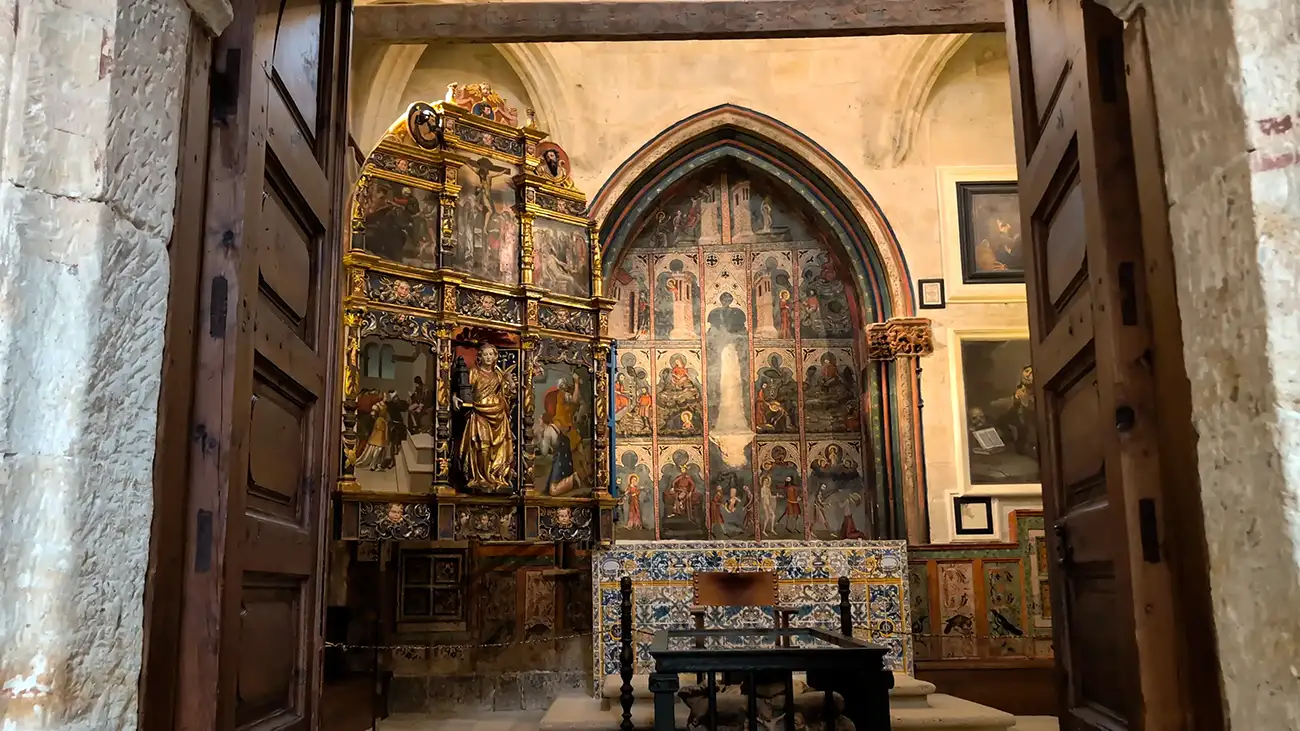
University of Salamanca
The city’s most iconic façade
The University of Salamanca is one of the oldest in the world. We didn’t take the full tour inside, but it’s well worth going to the Patio de Escuelas to see the incredibly detailed façade up close. Inside the main building are the Escuelas Mayores, with historic classrooms, a cloister and an old library, considered one of the most beautiful in Spain.
- Admission: €10 (Historic Building)
- Where: Patio de Escuelas
- Opening hours:
- 1 April to 15 October – Monday to Saturday, 10am–8pm; Sunday, 10am–2pm
- 16 October to 31 March – Monday to Saturday, 10am–7pm; Sunday, 10am–2pm
Did you know?
- The University of Salamanca was founded in 1218 and is the oldest Hispanic university still in continuous operation.
- One of the city’s most famous features is a tiny frog carved into the façade’s ornate stonework.
- The tradition of searching for the frog goes back centuries. Students believed that spotting it would bring good luck in exams, and to this day, visitors gather in front of the building trying to find it.
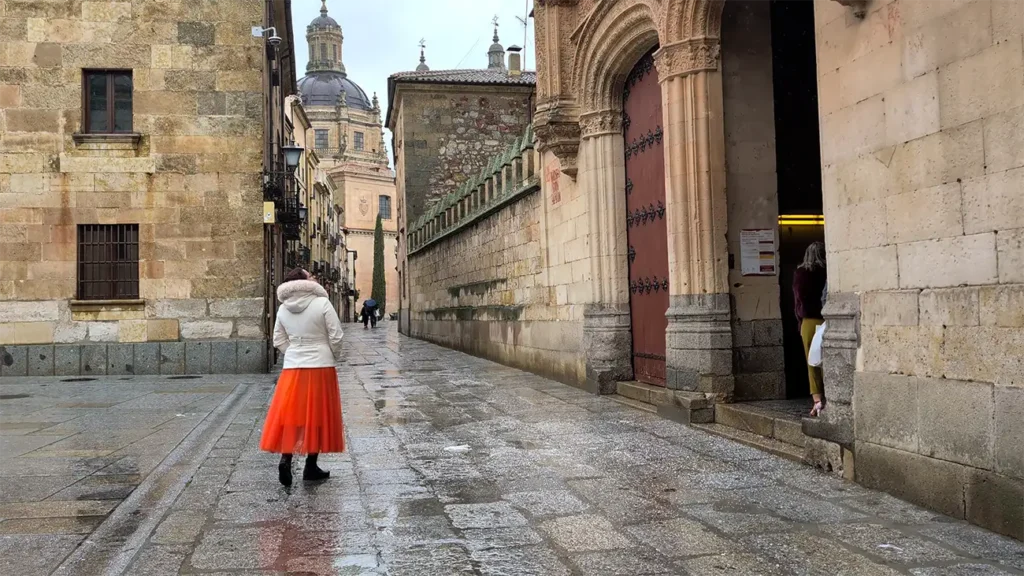
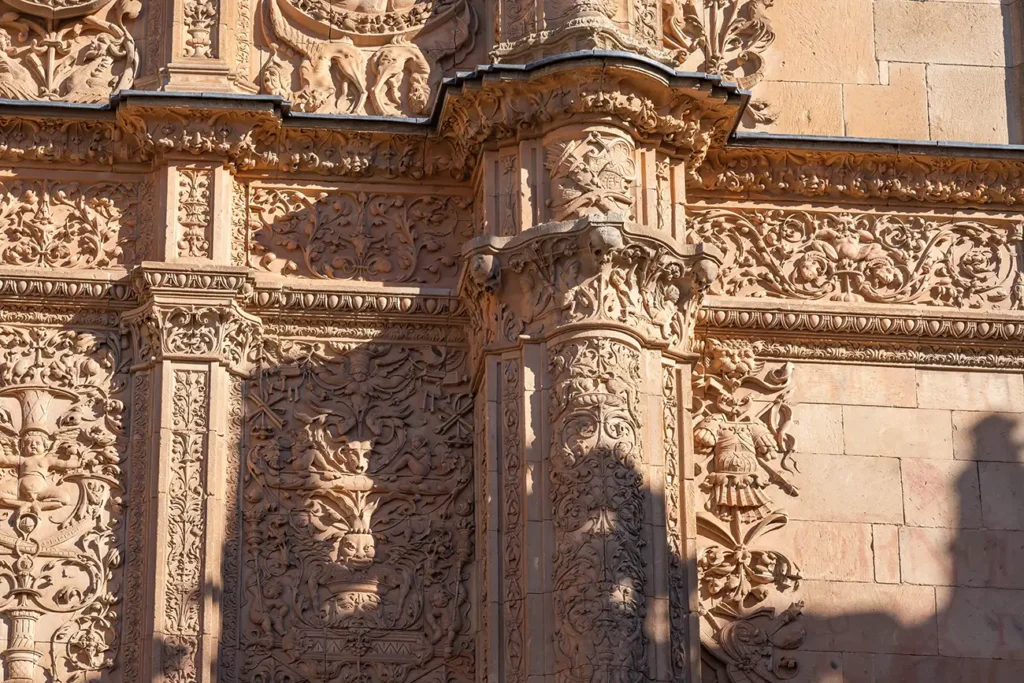
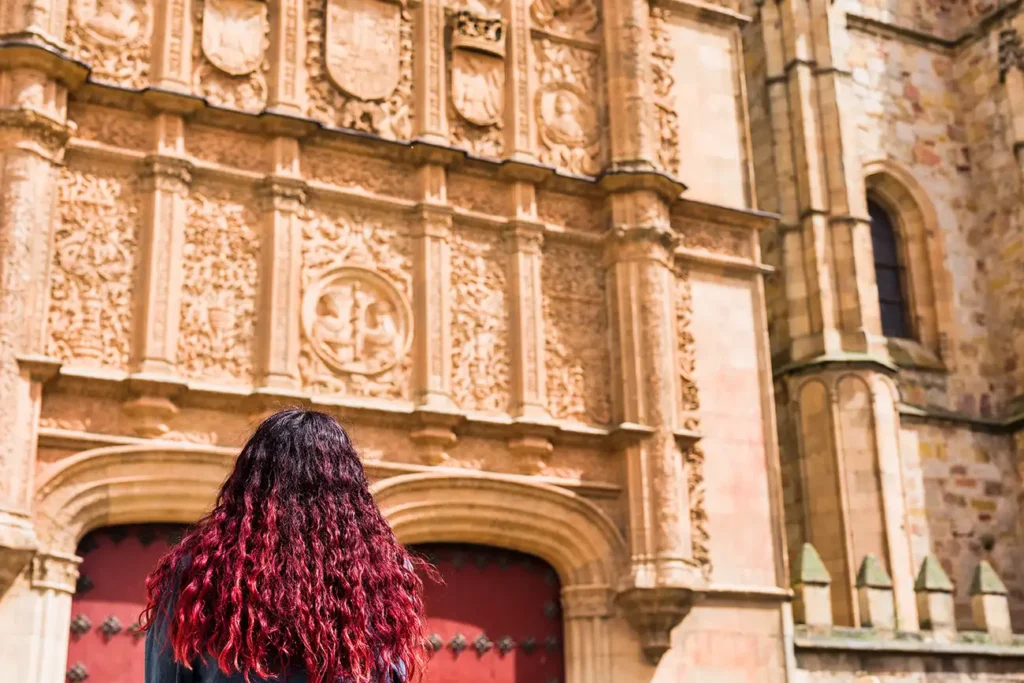
Ieronimus Towers
The cathedral towers visit
This was our favourite experience in Salamanca. The visit, called Ieronimus, takes you through the towers and upper levels of the cathedrals, passing by exhibition rooms, old staircases, stained-glass windows, walkways and viewpoints. The route goes over the cathedral rooftop and ends at the top of the tower, with an impressive view over the city and the bells (which ring every 15 minutes and are very loud!).
Even with rain and strong wind on the day of our visit, it was absolutely worth it. The entrance is separate from the main cathedral ticket and can be done self-guided or with a guide.
- Admission: €4 (we recommend booking online in advance)
- Where: Side entrance at Plaza Juan XXIII, next to the New Cathedral
- Opening hours:
- March to December: 10:00–20:00 (last entry at 19:00)
- January and February: 10:00–18:00 (last entry at 17:00)
Did you know?
- The staircase is so narrow that only one person fits at a time. A traffic light system controls when you can go up or down.
- The tour goes through the upper areas of both cathedrals, including internal walkways, exhibition rooms and viewpoints.
- One of the highlights is the aerial view of the Old Cathedral from the Sala del Alcaide.
- The name “Ieronimus” refers to the Latin title used by the cathedral’s founding bishop.
- Look out for the high corridors of the New Cathedral, the external walkway of the side tower (known as Torre del Gallo), and the balcony overlooking Plaza de Anaya.
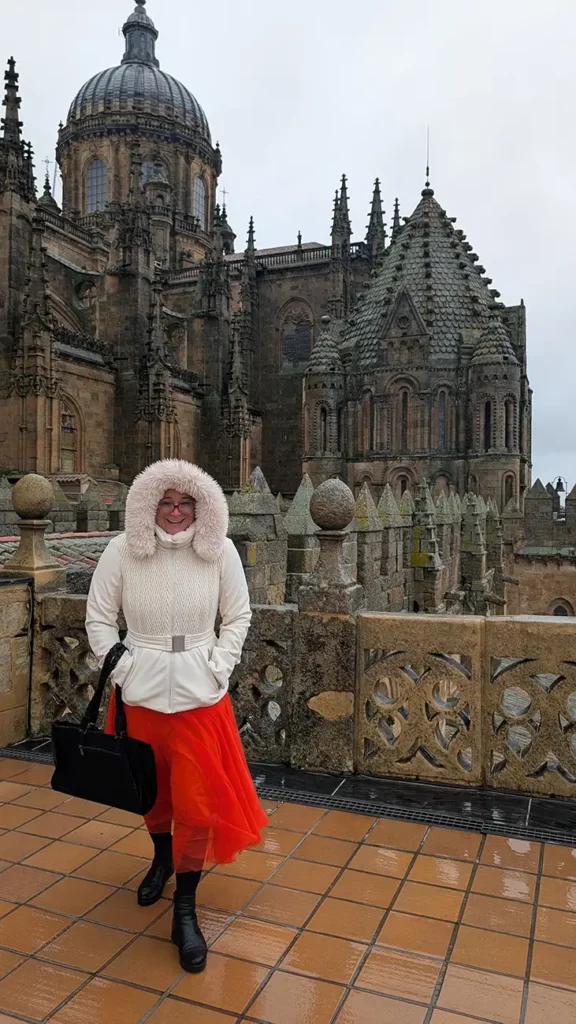

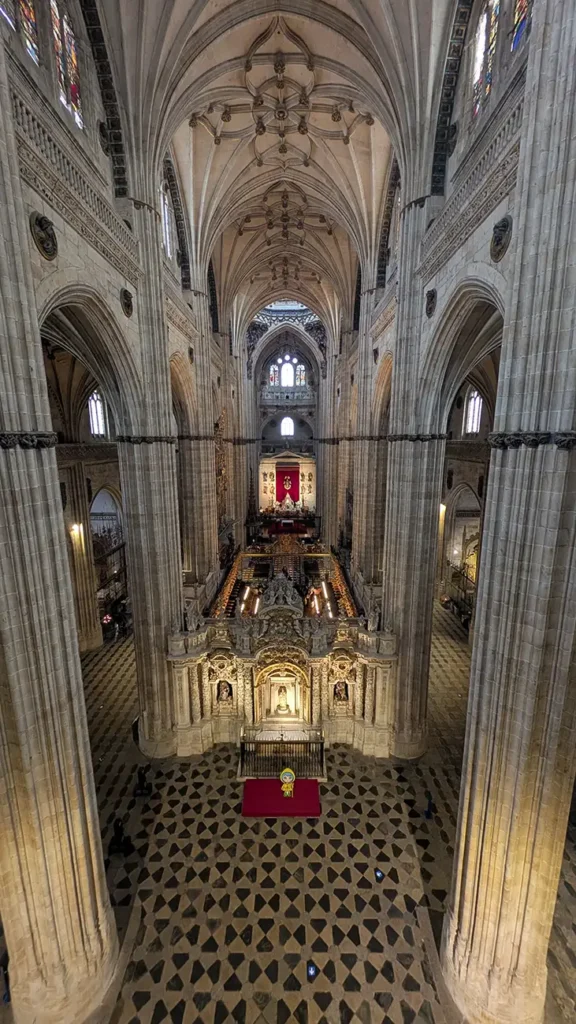
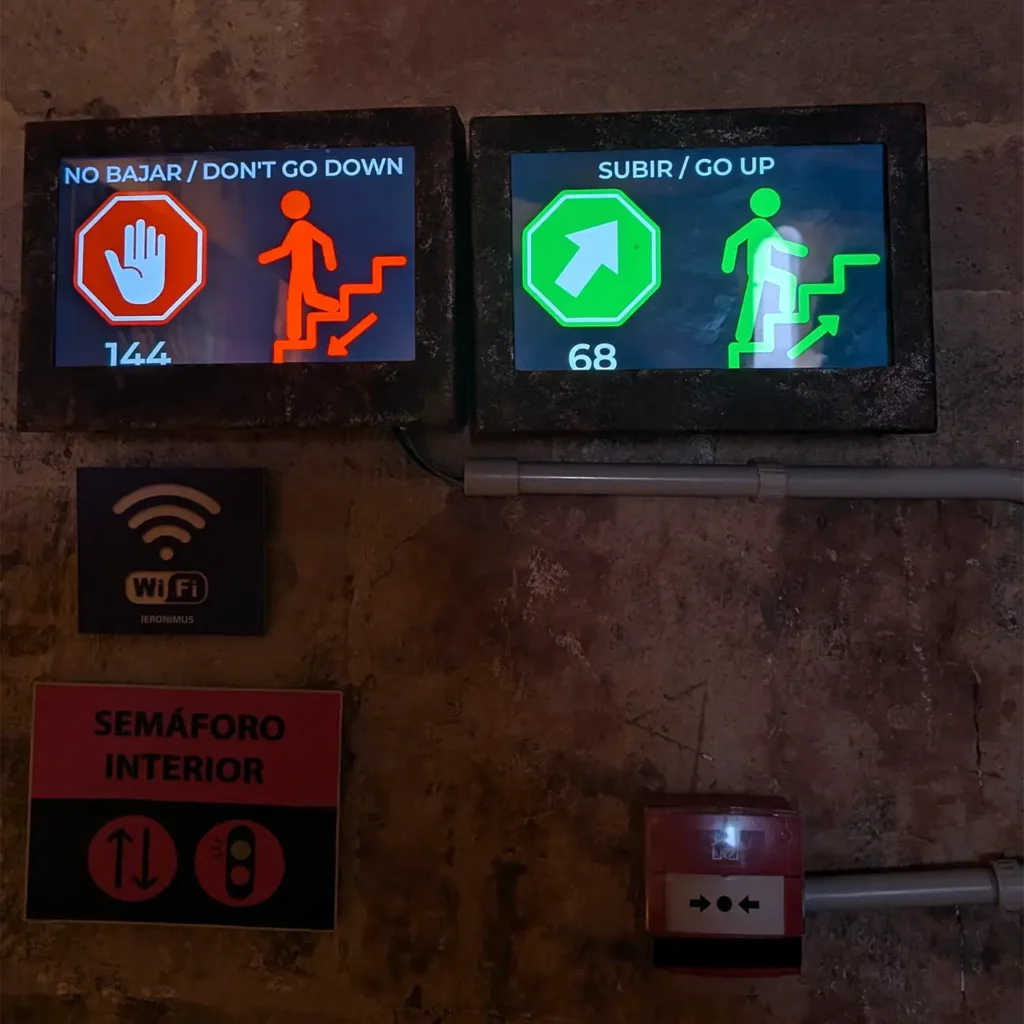


Cave of Salamanca + Medieval Walls
A quick stop to see something fascinating
The Cueva de Salamanca is all that remains of the crypt of the old Church of San Cebrián, which was destroyed in the 16th century. According to legend, the Devil himself taught black magic there to seven students. Just across the street, the Sedes Antigua Castrorum archaeological centre displays a section of the city’s original wall and tells the story of the ancient “military Salamanca”, through audiovisual material and explanatory panels. It’s a short and free visit.
- Admission: Free of charge
- Where: Cuesta de Carvajal
- Opening hours:
- Cueva de Salamanca: daily, from 8:30am to 9:30pm
- Ancient Wall Interpretation Centre: Fridays from 5pm to 8pm; Saturdays, Sundays and public holidays from 10am to 2pm and from 5pm to 8pm (closed Monday to Thursday)
Did you know?
- The legend of the Cave inspired authors such as Cervantes and Walter Scott, helping spread its fame across Europe.
- Above the Cave stands the Tower of the Marquis of Villena, which features in several versions of the legend.
- The entrance to the archaeological centre often goes unnoticed by passers-by, but it houses one of the oldest surviving sections of Salamanca’s wall.
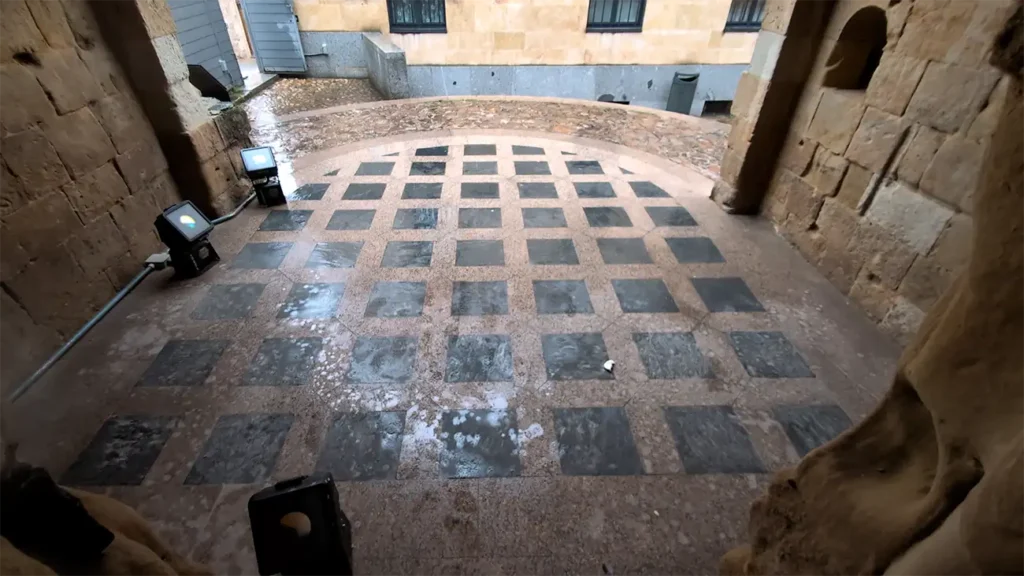
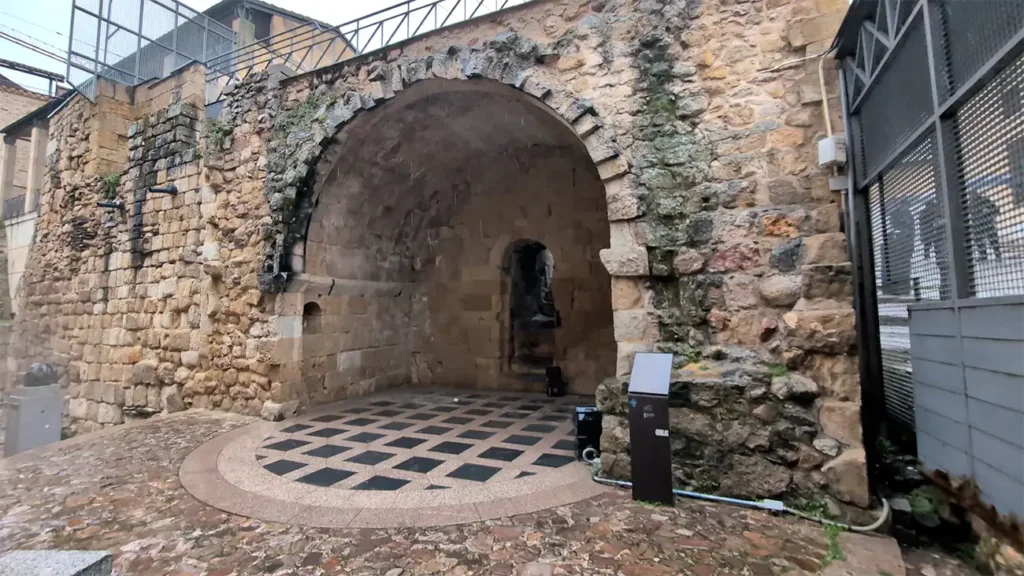

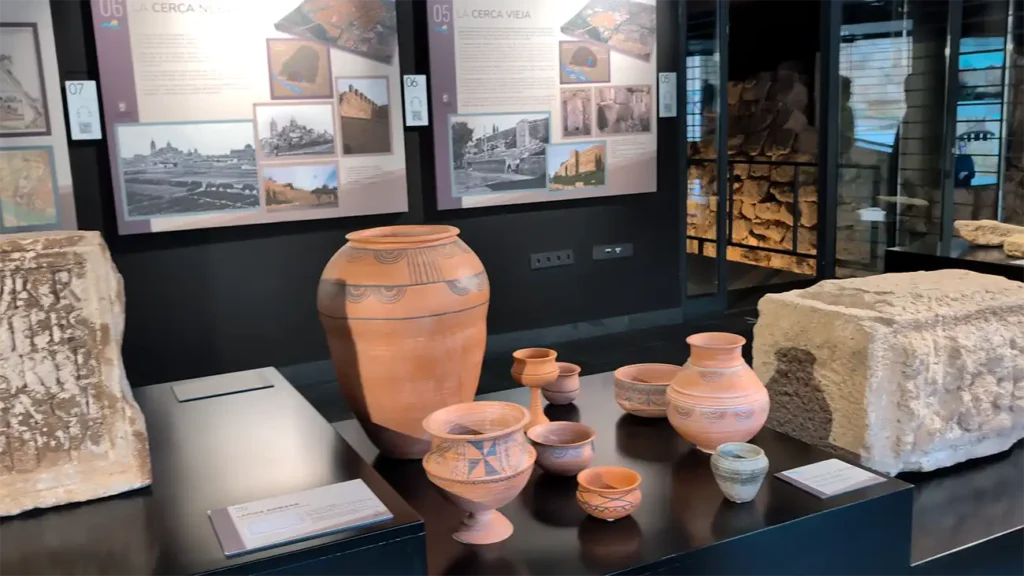

Las Dueñas Convent
A peaceful visit
Less visited than other landmarks in Salamanca, the Convent of Las Dueñas is a great option for those seeking a quieter spot. Founded in the 15th century by Dominican nuns, it occupies what was once a former Mudejar palace. Highlights include the two-storey Renaissance cloister, its beautifully decorated columns, the horseshoe-arched entrance, and views of the cathedral towers.
- Admission: €3
- Where: Plaza del Concilio de Trento, 1
- Opening hours:
- Summer (31 March to 30 October): Monday to Saturday, from 10:30am to 12:45pm and from 4:30pm to 7:15pm
- Winter (28 October to 31 March): Monday to Saturday, from 10:30am to 12:45pm and from 4:30pm to 5:45pm
- Closed on Sundays and public holidays
Did you know?
- The convent was built over an old Mudejar palace and still preserves a horseshoe arch from the original structure.
- The cloister has a pentagonal layout, which is unusual for religious buildings.
- The convent is still home to cloistered Dominican nuns.
- The nuns sell handmade sweets on-site, prepared within the convent.
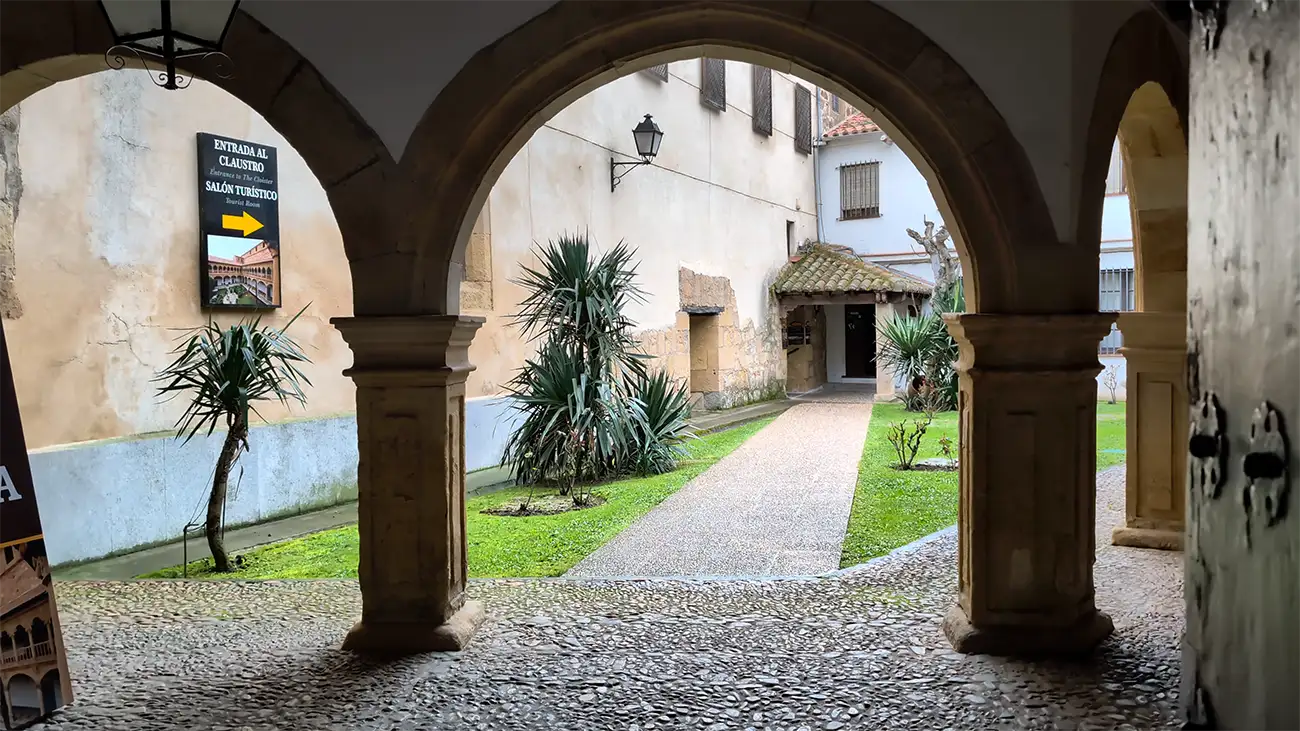


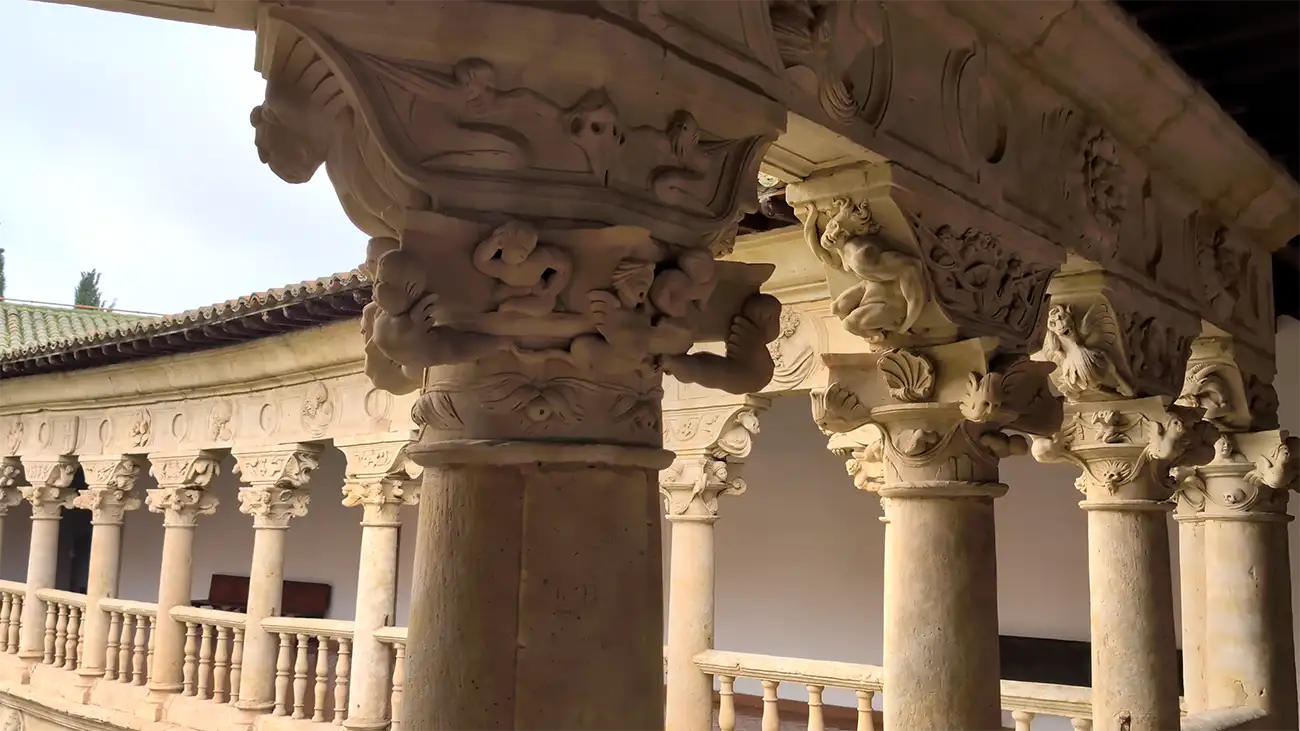
La Clerecía + Scala Coeli
One of the best views in the city
The former Jesuit headquarters, now part of the Pontifical University, is home to one of Salamanca’s most famous viewpoints: the climb to the Clerecía towers, known as Scala Coeli. From the top, you get sweeping views over the entire city, including the cathedrals, Casa de las Conchas, and the old town. The visit includes indoor balconies overlooking the altar, exhibition rooms, and a three-storey Baroque cloister.
- Admission: €3.75 (or €6 including access to the lower part of the church)
- Where: Calle Compañía, 5
- Opening hours:
- March to November: daily, from 10am to 8pm
- December to February: daily, from 10am to 6pm
- Free entry on Tuesdays from 10am to 12pm (except public holidays, Holy Week, July and August)
Did you know?
- The name Scala Coeli means “Stairway to Heaven” and the climb certainly lives up to it.
- Although it’s one of the most visited attractions, it’s usually quieter than the Ieronimus towers, making it a good alternative for aerial views without the queues.
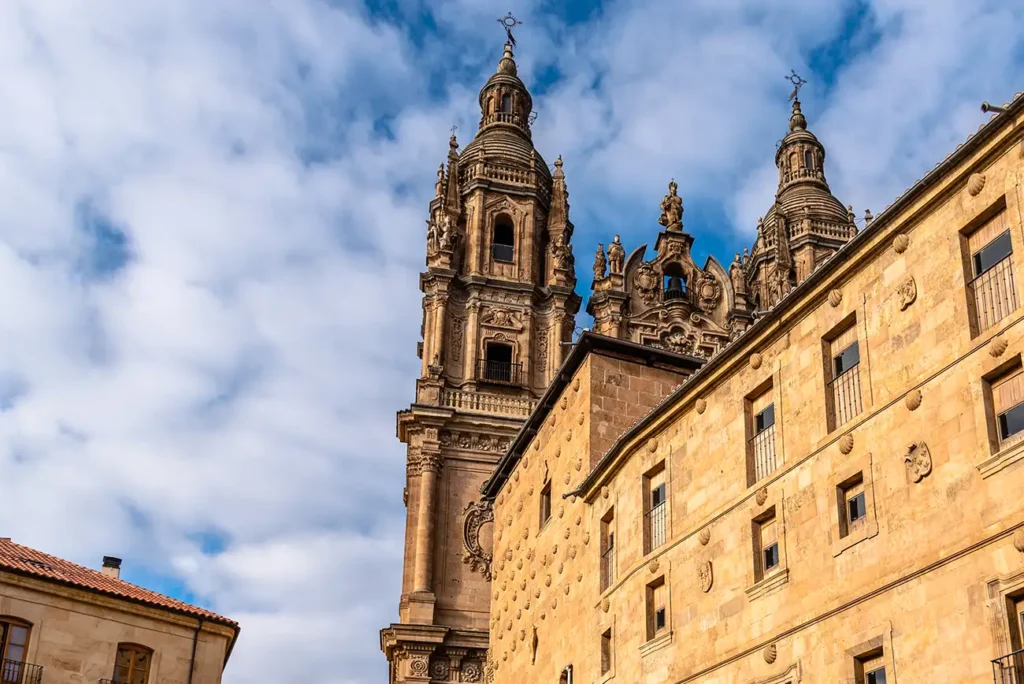

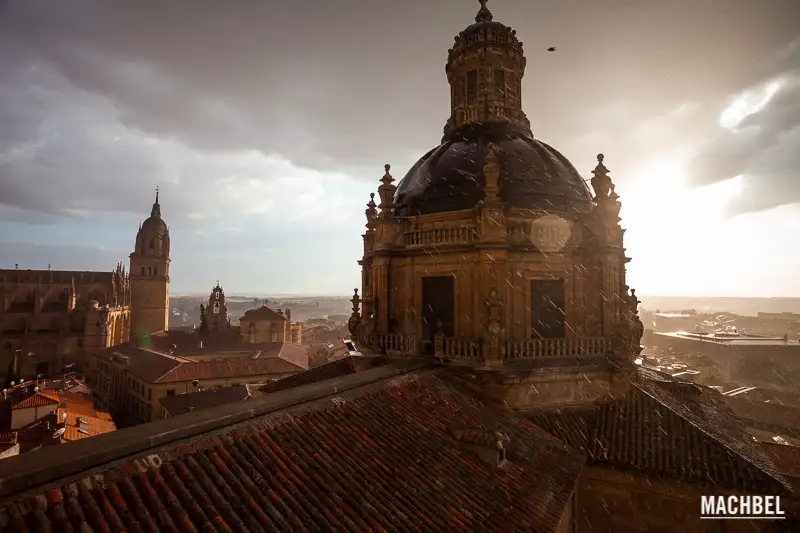
Casa Lis
Art Nouveau and Art Deco Museum in a modernist mansion
Casa Lis houses a rich and varied collection of decorative objects from the 19th and 20th centuries, including porcelain dolls, antique furniture, and coloured glass pieces. The space is small, but the interior is stunning. And even if you’re not planning to visit the museum, the café on the ground floor—with its beautiful stained-glass windows—is well worth the stop.
- Admission: €7 (free on Thursdays from 11am to 2pm)
- Where: Calle Gibraltar, 14
- Opening hours:
- 15 March to 15 November: daily, from 11am to 8pm
- 16 November to 14 March: Tuesday to Friday, from 11am to 2pm and from 4pm to 7pm; Saturdays and Sundays, from 11am to 8pm
Did you know?
- The colourful iron and glass façade, visible from outside, is the building’s most iconic feature.
- The museum holds one of Spain’s largest collections of Art Nouveau and Art Deco.
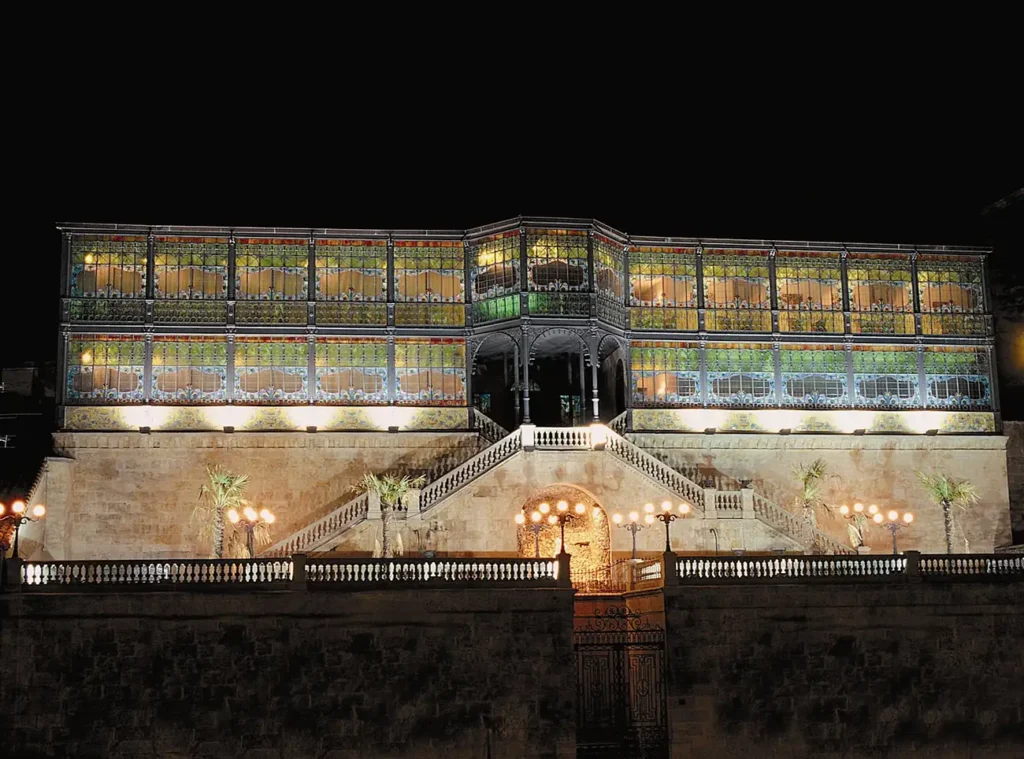
Museocasalis, CC BY-SA 4.0, via Wikimedia Commons
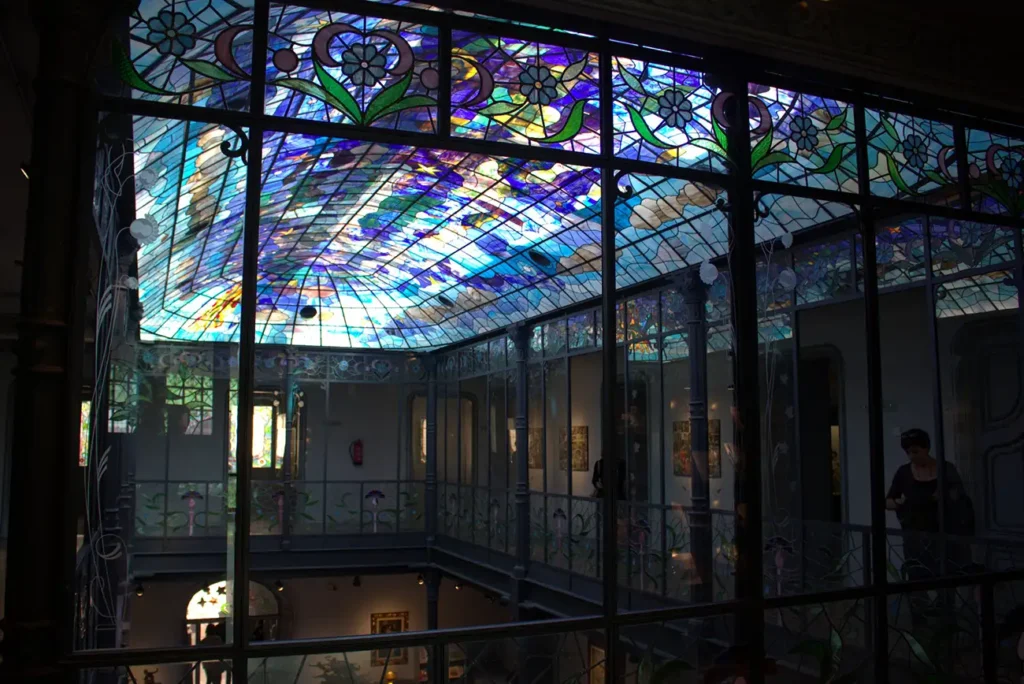
Photo: Alba Villar Vázquez
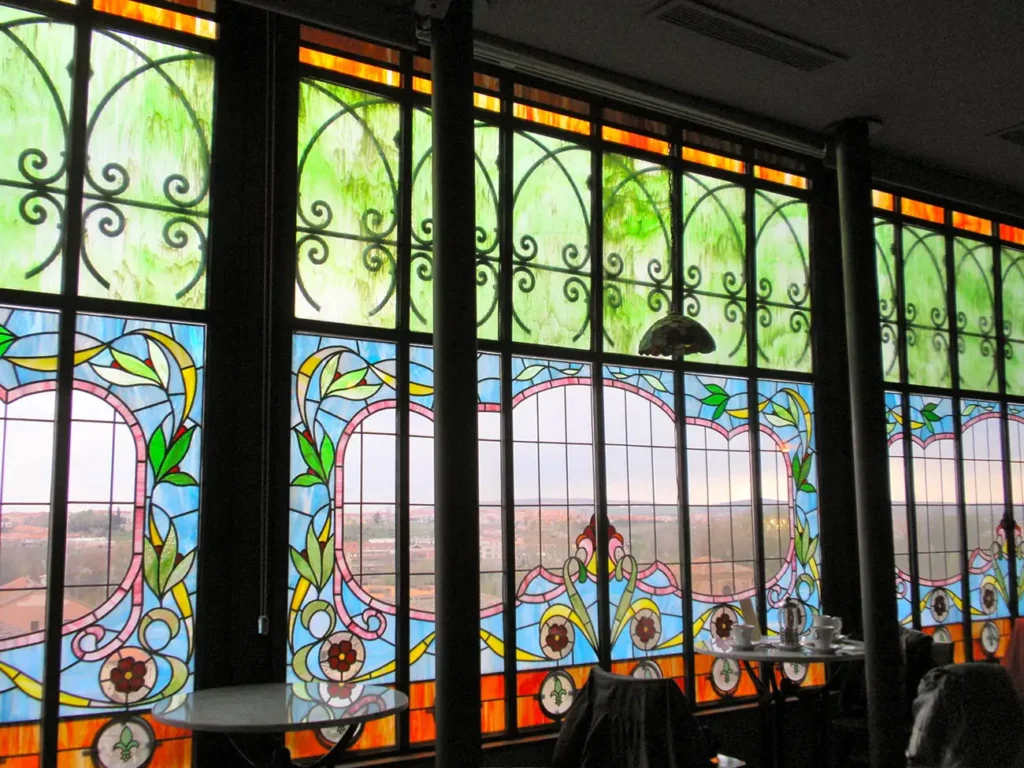
Siri twin, CC BY-SA 4.0, via Wikimedia Commons
Other Places to Include in Your Itinerary
In addition to Salamanca’s main tourist attractions, the city has several charming hidden spots that are well worth exploring—especially if you have a bit more time.

Huerto de Calixto y Melibea
A walled garden overlooking the River Tormes. Its name comes from a 15th-century Spanish novel. It’s a peaceful spot with benches, shade, and views of the city walls.
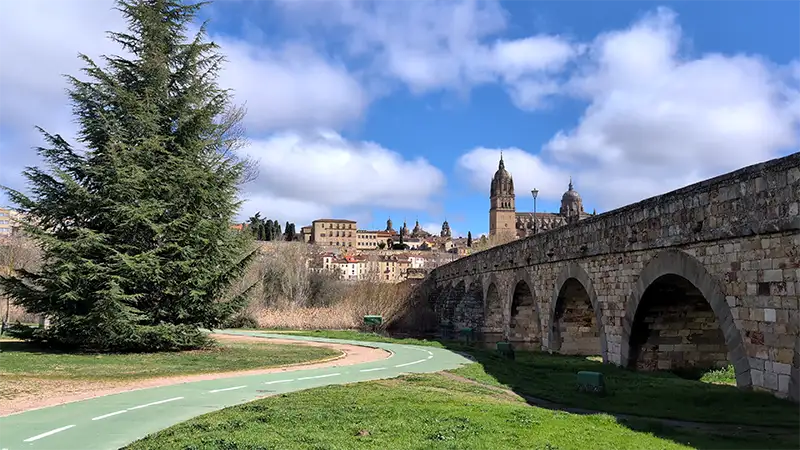
Roman Bridge
Over 2,000 years old, this bridge connects the city centre to the banks of the River Tormes. Now pedestrian-only, it offers one of the best views of the cathedrals.
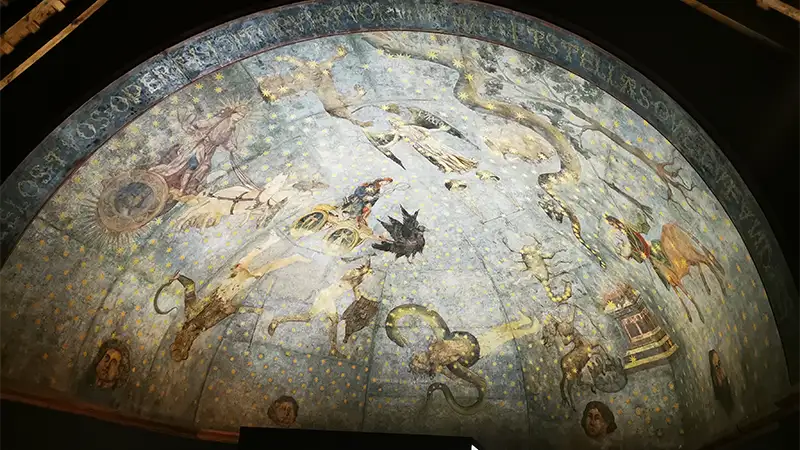
Cielo de Salamanca
Part of the University, the Escuelas Menores building houses a 15th-century ceiling painting depicting the sky and zodiac signs. Entry is free and the space is small—perfect for a quick stop.
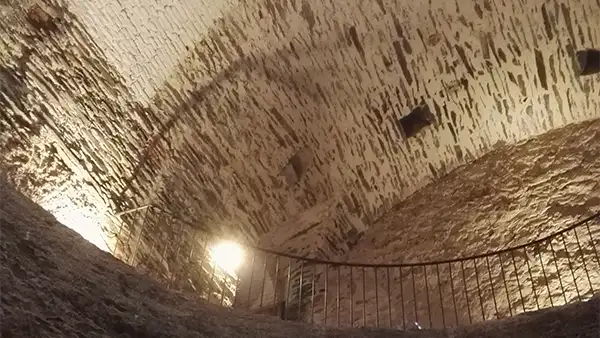
Pozo de Nieve
An underground structure where snow was once stored to produce ice. Visits are guided and must be booked in advance.

